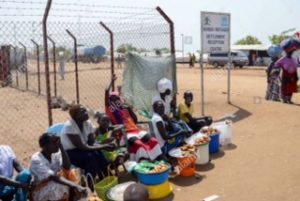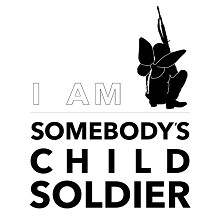Refugees in Uganda: a safe haven
Every year, June the 20th marks World Refugee Day. As people across the globe appreciate the strengths and hope of refugees, I am Somebody’s Child Soldier (IamSCS) wants to illustrate the situation of refugees in Uganda where an average of 2000 individuals have been fleeing to everyday for nearly a year.
Uganda is welcoming people from neighbouring countries
Since 2010, Uganda has been receiving refugees and asylum-seekers from Kenya, Rwanda, Burundi, Somalia and the Democratic Republic of the Congo (DRC) along with the estimated 1.84 million Ugandans who were displaced because of the civil war between the Ugandan military and the Lord’s Resistance Army (LRA) in the 1990s. Furthermore, since 2017, Uganda has been hosting more than 1.2 million refugees, among whom are 832,000 South Sudanese refugees, the majority of them children and women. Most of these displaced people are fleeing from the on-going civil war in South Sudan. Since the outbreak in 2013, this country has been experiencing a period of high insecurity, violence and famine, as Uganda used to be acquainted with in the 1990s. Subsequently, South Sudan has emerged as the third largest refugee crisis after Syria and Afghanistan, with the Sudanese seeking refuge in neighbouring countries.
Uganda offers different opportunities for refugees

Uganda’s refugee policy is a conspicuous international example of the provision of support to refugees as it’s considered to be the best place in the world to be a refugee. Indeed, the Ugandan government is working on providing refugees with access to the same services as those enjoyed by nationals in terms of food, water and sanitation, shelter, education and health services in the refugee villages. It also gives refugees the right to work, to establish businesses and the right to freedom of movement. For instance, the capital Kampala welcomes 95,000 refugees and Rhino Refugee Camp houses thousands of refugees. Bidi Bidi Refugee Camp is the largest refugee camp in the world and hosts thousands of displaced individuals from South Sudan, Burundi, Somalia and the DRC in Northern Uganda. In other areas of Uganda, the government provides large plots of land and materials for refugees to build homes or small farms.
Still, the high number of refugees makes aid more difficult for the government of Uganda. For example, many refugees lose their lives after contracting acute diarrhoea and malaria in Bidi Bidi refugee camp while malnutrition is still claiming the lives of thousands as even the United Nations High Commission for Refugees (UNHCR) is under resourced to handle the large influx of refugees. Yet, both the government of Uganda and UNHCR are working on the 2030 Agenda on Sustainable Development that aims to assist and host refugees.
IamSCS helps war-affected individuals
We must not forget that thousands of Ugandans also needed to flee their homes, especially during the powerful period of the Lord’s Resistance Army (LRA) in the 1990s. Similar to the children from South Sudan, Ugandan children were mutilated, brutalised and recruited to join the fighting. Now, while the LRA’s threat has been decreasing and thousands of Ugandans have been returning to their areas of origin, the need of war-affected individuals is enormous for education, training and healthcare in addition to their inclusion in their communities. When you donate to IamSCS, you help us to meet the long-term sustainable needs of those individuals affected by war and conflict in Uganda. Thank you.
Sources:
http://www.unhcr.org/uk/news/latest/2017/4/58e792134/6000-flee-fresh-south-sudan-violence-uganda.html
https://www.un.org/press/en/2016/sgsm18365.doc.html
http://www.unhcr.org/4fc880a7b.pdf



